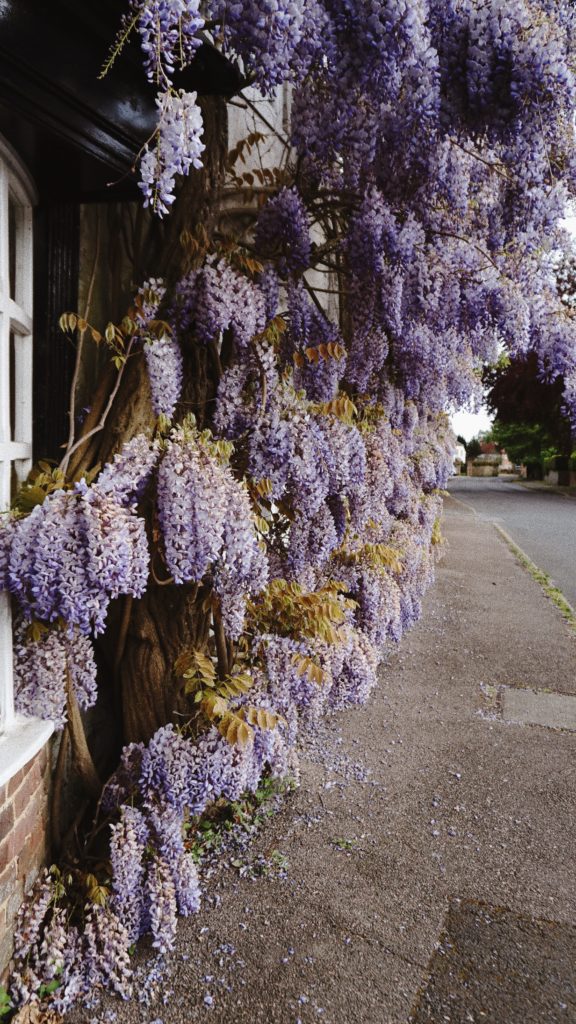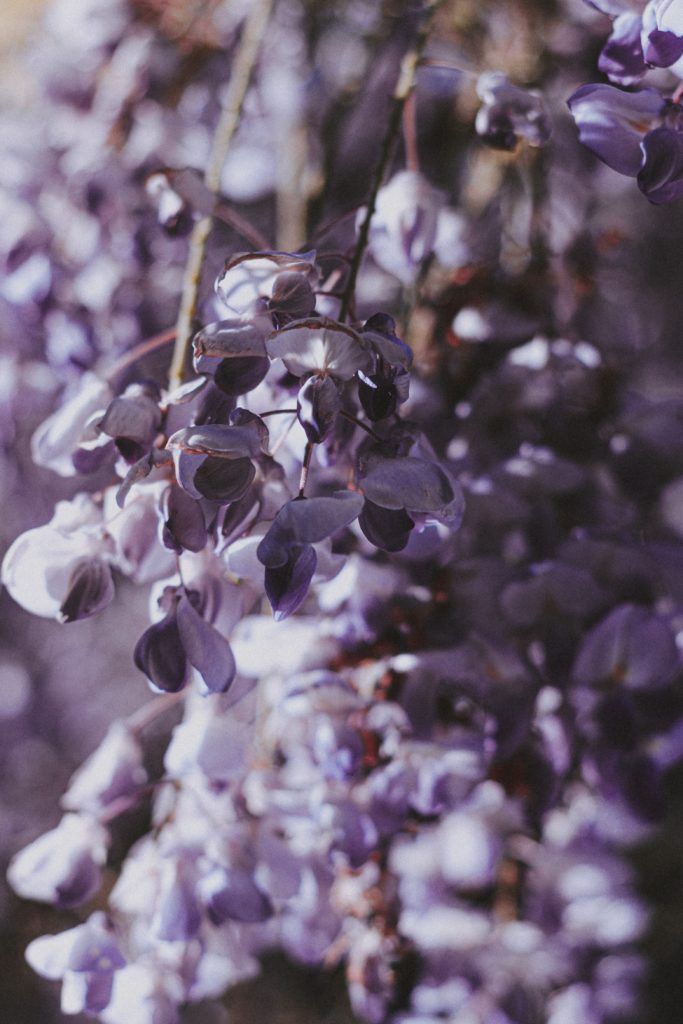Grow Wisteria in your garden.
Here at Make Their Day Flowers in Cheltenham, we know that as well as having a beautiful bouquet inside, like this lovely purple hued example in our shop, it’s nice to have a pretty floral view outside which is why so many people grow wisteria in their gardens. There aren’t many things more eye-catching than the gorgeous swathes of purple flowers that you see cascading down around the front doors from lots of the homes around town. The best time to plant wisteria is between October and April and so I thought it might be handy to publish this comprehensive guide to greowing wisteria in your own garden.
Wisteria is one of the most spectacular of all climbing garden plants, ranking in popularity alongside such established favorites as clematis and honeysuckle. Sumptuous trailing trusses of flower, each composed of masses of pea-shaped florets appears in May and June before the feathery multi-lobed light green leaves. The blossom, fragrant in most varieties, is generally blue, but some species have white, pink, lavender, or even purple flower. The plants have a twining habit, some species twining clockwise and others anticlockwise, but they grow to a large size and need plenty of room and strong support. They are generally hardy and easy to grow, but correct pruning in the first two or three years is important, both to establish a good framework and to encourage flowering.
Where to Plant Wisteria
Use wisterias to cover a wall, fence, arch or pergola or to scramble up a tree. A wisteria planted to share a pergola with laburnum or to climb up a mature laburnum tree produces a splendid effect. Wisteria can also be trained to grow as a standard (sturdy support is needed until the main stem is strong enough to be self-supporting) and also grown in a pot.

Species
The two most widely cultivated wisteria species, available in almost all good garden centers, are:
Wisteria floribunda. (Japanese wisteria). Height up to 30 feet. Different varieties bear white, pink, or blue flowers. One variety, Black Dragon, has large trusses of deep purple double flowers.
Wisteria Sinensis. (Chinese wisteria). Height up to 50 feet. The most frequently grown species. It includes white, violet, deep blue, and purple varieties.
However, within these species, there are many other varieties for gardeners to choose from. These will often only be found in specialist nurseries and plant centers.
Cultivation
Wisterias are fully hardy but can be prone to wind damage in an exposed position. In colder areas, the blossom can also be damaged when exposed to early morning sun after a frosty night, and the ideal position is a sheltered south or west facing site. They will grow in any reasonably fertile soil but do best in rich, moist loam. Dig in plenty of compost and bone meal when planting, and if sited against a wall should be planted far enough away to avoid the dry “shadow” of the wall. Feed and mulch them annually, but overfeeding can encourage excessive top growth at the expense of flowers.

Pruning
Once established, many wisterias will thrive and flower happily for years with no pruning beyond whatever is necessary to tidy them up. However, in the first few years, prune and train to create a framework of a strong main stem and a series of horizontal side branches. Thereafter, a twice-yearly pruning helps to encourage more abundant flower: In August, train any new shoots needed to extend the area of growth and cut back the remaining new season.
In late winter, before the easily damaged flower buds begin to swell, give the plant a general tidy, trimming out tangled growth and removing any long whippy growth from the flowering spurs. Their twining habit makes it easy to train them across arches and pergolas or through trees, but they need to be tied into a strong wire or trellis support if grown against a wall. Shoots can grow to about a foot long. Later, cut back any side growth sprouting from these freshly pruned shoots to promote short, stubby flowering spurs.
There is something so wonderful about a walk around Cheltenham when the wisteria is in full bloom, and so many of the towns and also glorious National Trust properties around the country have some incredible examples of well established wisteria plants and it really is a quintessentially English sight to see a low slung, butter yellow stone cottage adorned with purple blooms, especially here in the Cotswolds! Find out more about the best places to see beautiful National Trust spring gardens here, including wisteria. Let me know how you get on! I love hearing about your gardening adventures.




